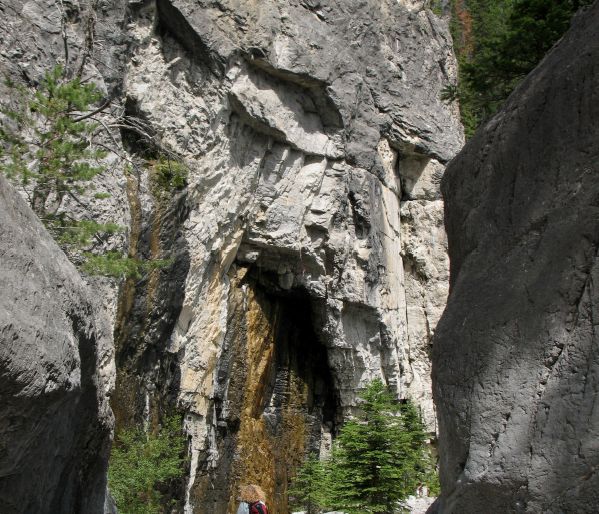
Ecologically-conscious planning? In this Alberta?
October 28, 2024
- •
- •
- •
This willingness to honestly represent the reality of recreational trails is encouraging, because it means they are already operating from an environmentally conscious perspective.
By Kennedy Halvorson
Read the PDF version here.
It is not often that I find myself pleasantly surprised opening a government document. Truthfully, there are times where I’m lucky to find the word ecosystem even mentioned, let alone considered in a plan or policy. So, it’s no exaggeration to say my read through the draft terms of reference for the Canmore Area Trails Strategy was refreshing, albeit mildly shocking. For example, here are a few sentences of the desired conditions the strategy seeks to achieve:
“Changes to the network occur with transparent process and with requisite authorizations. Unauthorized trail development does not occur.”
Wait, commitment to accountability?
“Trail tourism use and visitation does not unacceptably impact residents’ own enjoyment of the trails, trail amenities or their quality of life.”
And consideration of locals?
“Trail users and their communities of interest are informed and aware of the area’s ecological importance and key habitat requirements … the potential impacts of their activities, [and] equipped and prepared to participate in their activities safely and responsibly.”
Increased environmental education and preparedness?
“Comprehensive trail development, management, operations and maintenance accountabilities and responsibilities exist at a regional scale, are clearly articulated and are widely understood.”
Are they emphasizing regional planning?
“Trails are responsibly situated, sustainably designed and visitation is actively managed to minimize and mitigate disturbance and displacement of wildlife during sensitive seasons, preserve the continuity of wildlife corridors, maintain wildlife habitat and integrity of native plant communities, and avoid damage to fish habitat, watercourses, riparian areas, and wetlands.”
This is actual text within the strategy, which could be verbatim the input AWA would want to provide. And while it’s easy to promise sustainability and adherence to best management practices, what I find especially promising is the thoroughly examined challenges within the draft document.
The strategy notes that “trail users and trail use negatively impact the environment, wildlife and their habitats,” citing that they can contribute to reduced quality and quantity of ecosystems, reduced numbers and viability of wildlife populations, altered species behaviours and increased mortality risk, more human-wildlife conflicts and invasive species introduction, among other issues.
This willingness to honestly represent the reality of recreational trails is encouraging, because it means they are already operating from an environmentally conscious perspective. Acknowledging the issues trails and trail use can cause is a promising first step in developing a robust strategy that protects the nature Albertans want to enjoy.
There are some great tid-bits buried in the background review as well. Research that will inform the strategy includes the finding that “the effect of high-use anthropogenic features (i.e., busy trails) displace and disturb wary carnivores for over two kilometres, an effect size that has been consistently understated in previous work.” This has major implications for managing recreation in natural landscapes and illustrates the importance of reconsidering trail density.
AWA is still wary that the strategy contains language for adding new trails in the area. We have emphasized to the province that the network is already extensive and significantly reduces connectivity in what is an essential wildlife corridor providing passage through the Rockies. The strategy must identify trails that can sustainably offer a diversity of high-quality recreation opportunities, while prioritizing the ecological integrity that attracts people to the area in the first place. AWA will continue work to help ensure this the Canmore Area Trails Strategy is developed and implemented to best protect the wilderness.
I’ll leave you with one last line that really struck me, and that’s the stated desire that “places for quiet contemplation in nature” persist. What a lovely thought.
